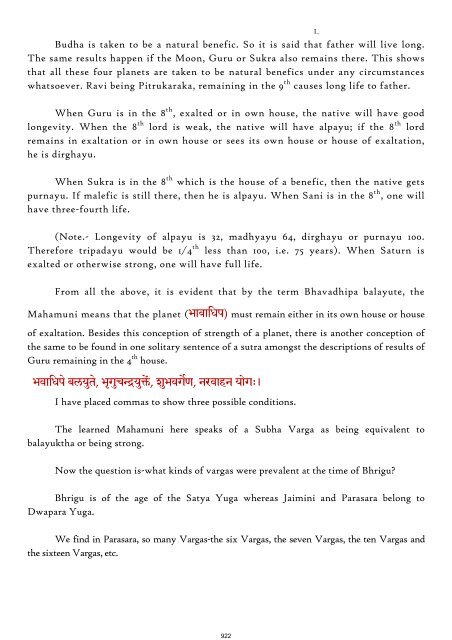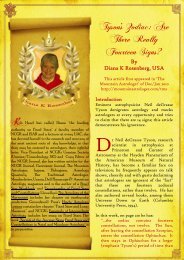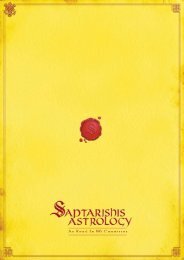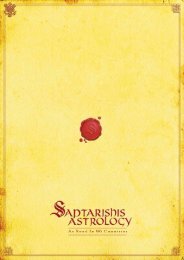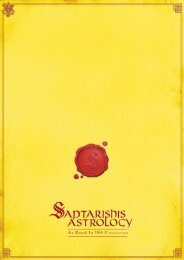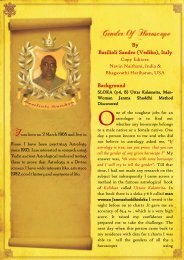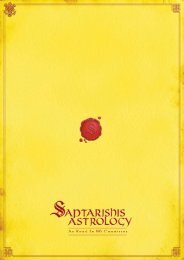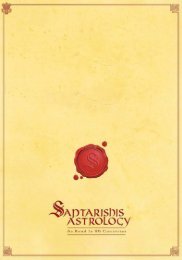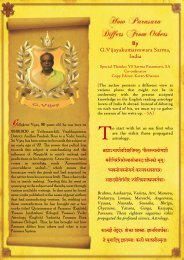SAVol8June2010Indian.. - Saptarishis Astrology
SAVol8June2010Indian.. - Saptarishis Astrology
SAVol8June2010Indian.. - Saptarishis Astrology
- No tags were found...
Create successful ePaper yourself
Turn your PDF publications into a flip-book with our unique Google optimized e-Paper software.
922<br />
I..<br />
Budha is taken to be a natural benefic. So it is said that father will live long.<br />
The same results happen if the Moon, Guru or Sukra also remains there. This shows<br />
that all these four planets are taken to be natural benefics under any circumstances<br />
whatsoever. Ravi being Pitrukaraka, remaining in the 9 th causes long life to father.<br />
When Guru is in the 8 th , exalted or in own house, the native will have good<br />
longevity. When the 8 th lord is weak, the native will have alpayu; if the 8 th lord<br />
remains in exaltation or in own house or sees its own house or house of exaltation,<br />
he is dirghayu.<br />
When Sukra is in the 8 th which is the house of a benefic, then the native gets<br />
purnayu. If malefic is still there, then he is alpayu. When Sani is in the 8 th , one will<br />
have three-fourth life.<br />
(Note.- Longevity of alpayu is 32, madhyayu 64, dirghayu or purnayu 100.<br />
Therefore tripadayu would be 1/4 th less than 100, i.e. 75 years). When Saturn is<br />
exalted or otherwise strong, one will have full life.<br />
From all the above, it is evident that by the term Bhavadhipa balayute, the<br />
Mahamuni means that the planet (भावािधप) must remain either in its own house or house<br />
of exaltation. Besides this conception of strength of a planet, there is another conception of<br />
the same to be found in one solitary sentence of a sutra amongst the descriptions of results of<br />
Guru remaining in the 4 th house.<br />
भवािधपे बलयुते, भृगुचयु , शुभवगण, नरवाहन योगः।<br />
I have placed commas to show three possible conditions.<br />
The learned Mahamuni here speaks of a Subha Varga as being equivalent to<br />
balayuktha or being strong.<br />
Now the question is-what kinds of vargas were prevalent at the time of Bhrigu<br />
Bhrigu is of the age of the Satya Yuga whereas Jaimini and Parasara belong to<br />
Dwapara Yuga.<br />
We find in Parasara, so many Vargas-the six Vargas, the seven Vargas, the ten Vargas and<br />
the sixteen Vargas, etc.


